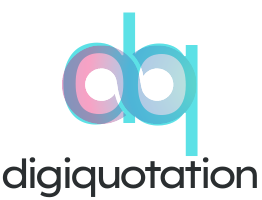Digital marketing is the practice of promoting products, services, or brands using electronic media and technology. It encompasses all online marketing efforts, including search engine optimization (SEO), pay-per-click advertising (PPC), social media marketing, email marketing, and content marketing.
In today’s digital age, more and more people are using the internet and digital devices to research and purchase products and services. Digital marketing allows businesses to connect with potential customers and build brand awareness in the online space.
Some of the key benefits of digital marketing include:
- Reach: Digital marketing allows businesses to reach a larger and more targeted audience than traditional marketing methods.
- Cost-effective: Digital marketing can be more cost-effective than traditional marketing methods because it often requires less upfront investment and can be measured more accurately.
- Measurable: Digital marketing provides detailed metrics that can be used to track and measure the effectiveness of marketing campaigns and make data-driven decisions.
- Flexibility: Digital marketing allows businesses to quickly adjust their marketing strategy to respond to changes in the market or customer needs.
- Interactivity: Digital marketing provides opportunities for businesses to interact with customers in real-time through social media, email, and other online channels. This can help to build stronger relationships with customers and improve brand loyalty.
Types Of Digital Marketing
There are several types of digital marketing. Some of the most common types include:
- Search Engine Optimization (SEO): SEO is the process of optimizing a website to rank higher in search engine results pages (SERPs). This involves making changes to the website’s structure, content, and other factors to improve its visibility and relevance for specific search terms.
- Pay-Per-Click (PPC) Advertising: PPC advertising is a type of digital advertising where businesses pay each time someone clicks on one of their ads. This can include search engine advertising, display advertising, and social media advertising.
- Social Media Marketing: Social media marketing involves using social media platforms like Facebook, Twitter, Instagram, and LinkedIn to promote a business and its products or services. This can include organic posting, paid advertising, and influencer marketing.
- Content Marketing: Content marketing involves creating and sharing valuable, relevant, and engaging content to attract and retain a target audience. This can include blog posts, videos, infographics, and other types of content.
- Email Marketing: Email marketing involves sending commercial messages to a group of people via email. This can include newsletters, promotional emails, and automated drip campaigns.
- Affiliate Marketing: Affiliate marketing involves promoting other people’s products or services and earning a commission for each sale or referral made through a unique affiliate link.
- Video Marketing: Video marketing involves creating and sharing videos to promote a business or product. This can include product demos, explainer videos, and customer testimonials.
How Digital Marketing Works
Digital marketing works by leveraging various digital channels and technologies to connect with potential customers and promote products or services. Here is a general overview of how digital marketing works:
- Identify target audience: The first step in digital marketing is to identify the target audience or ideal customer profile. This involves understanding the demographics, interests, and behaviors of the people who are most likely to be interested in a particular product or service.
- Choose digital channels: Based on the target audience, the next step is to choose the most appropriate digital channels to reach them. This can include search engines, social media platforms, email, and other digital channels.
- Develop a strategy: Once the target audience and digital channels have been identified, a digital marketing strategy can be developed. This involves creating a plan for how to use each channel to reach the target audience and achieve specific marketing objectives.
- Create and optimize content: The next step is to create and optimize content for each digital channel. This can include website content, blog posts, social media updates, email newsletters, and other types of content that will be used to engage and attract potential customers.
- Launch and monitor campaigns: After the content has been created and optimized, digital marketing campaigns can be launched. This involves creating and publishing ads, social media updates, and other content to the target audience.
- Analyze and optimize results: As the campaigns are running, data can be collected and analyzed to measure the effectiveness of each digital marketing channel and campaign. This data can be used to make adjustments and optimize the campaigns for better results.
Overall, digital marketing works by leveraging the power of technology and digital channels to connect with potential customers and promote products or services. By developing a targeted strategy, creating engaging content, and analyzing and optimizing the results, businesses can achieve their marketing objectives and grow their customer base.

